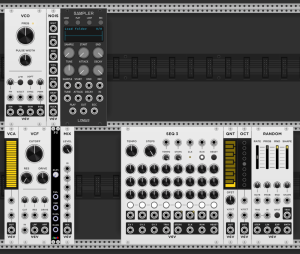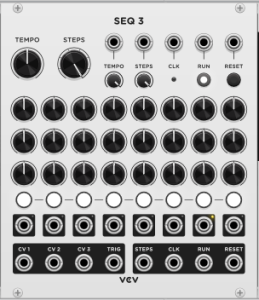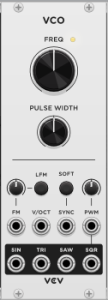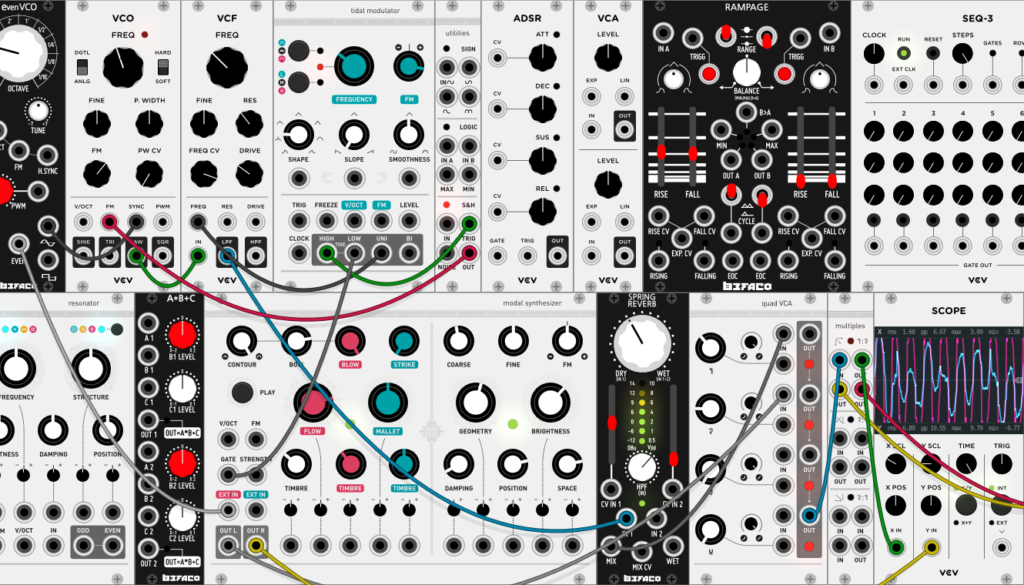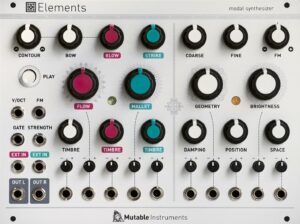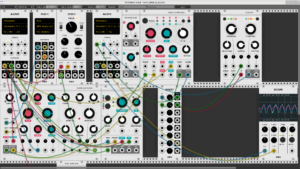Noise In Music
In the realm of digital music production, there exists a fundamental concept known as the “noise floor.” It represents the level of background noise present in any audio system or recording environment. Interestingly, our world is never entirely silent; there is always a gentle hum of ambient noise surrounding us. Human hearing has evolved to appreciate and find comfort in these subtle noises, making them an integral part of our daily lives.
If you record with your phone or a handheld device some sounds on the street, you’ll hear this smooth white noise in the background. Listening to the recording afterwards will have this reality with a blanket of noise that we get familiar with. Through the history of music recording, depending on the era and medium, the noise differed. If you grew up with a certain sound, there might have been a typical noise you associate with it.
Noise in music can be nostalgic.
Not to forget that some people actually love sleeping with noise in the background as it blocks outside sounds. With ADHD, some noise (like Brown) can help with focus.
The concept of noise finds a captivating application in the world of modular synthesizers. Modular synths offer a playground of endless possibilities, where musicians and sound designers can manipulate and harness different types of noise to create lush and music landscapes. In this blog post, we will go through the world of noise in modular synths, exploring the different types of noise available and the creative opportunities they offer.
White Noise – A Hissing Foundation:
White noise, resembling a gentle hiss, is one of the most common types of noise found in modular synthesizers. It features a consistent amplitude across all frequencies within the audible range. Embracing white noise in your patches can introduce exciting possibilities. For an exercise, patch a white noise generator to trigger an envelope, and use it to create rhythmic bursts of noise at irregular intervals. This technique can produce percussive and glitchy elements in your music, adding a touch of randomness to your compositions.
I also like to introduce a noise floor of white noise, slightly filtered, to create a feeling of proximity. It’s hard to explain, but sometimes clients feel their music is empty and will drown everything in reverb. Adding some white noise is a good alternative to that as reverb can also introduce various mixing issues.
Pink Noise – A Softer Alternative:
Pink noise, also known as 1/f noise, is characterized by equal energy in each octave. Unlike white noise, pink noise contains more low-frequency energy, resulting in a warmer and softer sound. To explore pink noise, connect it to a filter module and use an envelope or an LFO to sweep through the filter’s frequency cutoff. This exercise will help you understand how pink noise can add depth and character to your sounds, particularly in filter sweeps and ambient textures.
There’s also some theories about mixing with noise. Some people put a pink noise as a background and then will mix it over. The idea is that you want to mix each channel through the noise and when you hear it, then you know it’s levelled equally (since pink noise is full range). I’m not too keen of that approach but it can be useful to try it.
Gaussian Noise – Emulating Natural Sounds:
Gaussian noise, also known as normal distribution noise, features a bell-shaped amplitude distribution, mimicking natural sounds found in our environment. It is particularly useful for simulating wind or water sounds. Experiment with this type of noise by using it in a sample and hold module to generate random voltages. Then, patch the random voltages to various parameters in your modular system, such as oscillator pitch or filter cutoff. This exercise will demonstrate how Gaussian noise can add an organic touch to your patches.
Any noises passed through a quantizer will offer random melodies. A technique to generate random melodies is to to send noise through a sample and hold, then trigger a moment where the note should be played. The sample and hold will pick a note from the noise, which then you can pass through a quantizer to make sure it is set to a scale. The result will be musical.

Digital Noise – Infinite Possibilities
In the context of modular synths, digital noise refers to the generation of noise using digital algorithms and processes, as opposed to analog noise generated by analog circuits. The term “infinite possibilities” refers to the vast range of creative and unconventional sounds that digital noise sources can produce. Unlike traditional analog noise sources like white or pink noise, digital noise allows for extensive manipulation and sculpting, leading to unique and experimental textures.
Digital noise generators in modular synthesizers often provide various types of noise algorithms that can emulate natural or chaotic phenomena, simulate environmental sounds, or create entirely new sonic landscapes. Here are some examples of what digital noise can offer:
- Granular Noise: Granular synthesis is a technique where sound is broken down into tiny grains, and these grains can be randomly rearranged and manipulated. Digital noise sources can implement granular synthesis algorithms, producing a vast array of grain-based noises that can range from glitchy textures to ethereal pads.
- Custom Noise Algorithms: Some digital noise modules allow users to upload or create custom algorithms. This feature empowers sound designers to craft noise with specific characteristics, opening up possibilities for entirely novel soundscapes that push the boundaries of conventional synthesis.
- Sampled Noise: Digital noise sources can incorporate sampled noise recordings, allowing for the recreation of real-world environmental sounds, machinery, or other interesting textures. These sampled noise sources can be creatively combined with other elements in the modular setup to create evocative and immersive sonic experiences.
- Noise Modifiers: Digital noise modules often come with various modifiers and processing options. These may include waveshaping, filtering, amplitude modulation, and more, giving you the tools to sculpt the digital noise in unique ways and tailor it to fit your artistic vision.
- Randomized Algorithms: Some digital noise sources have algorithms that introduce a degree of randomness into the sound generation. This stochastic nature can lead to unpredictable and evolving textures, which can add an element of surprise and excitement to your patches.
As you experiment with digital noise in modular synthesizers, you’ll discover a wide range of creative possibilities. Whether you seek to create atmospheric soundscapes, experimental textures, or unique percussion elements, digital noise sources offer a playground of sonic exploration. The ability to customize and manipulate noise algorithms within the digital domain gives you unparalleled control over the sounds you generate, making digital noise a powerful and indispensable tool for innovative sound design.
Noise as a Modulation Source – Adding Life to Your Patches
Noise can be a versatile modulation source in modular synthesizers. Use a noise source to modulate parameters like oscillator pitch, filter cutoff, or LFO rate. Adjust the amount of modulation to understand how noise affects the timbre and movement of your sound. This exercise will demonstrate how noise as a modulation source can introduce dynamics and unpredictability into your patches, bringing them to life.
This is not something you can do with Ableton Live, sadly and this is why sound design in modular contexts open up new options that are complementary to Live.
Noise-Based Percussion – Unconventional Drum Sounds
Create unique and unconventional percussion sounds by utilizing noise sources to trigger envelopes that control VCAs or other sound generators. This exercise will help you craft snare drum-like sounds, hi-hats, and other percussive elements with a distinctive character, setting your compositions apart from traditional drum kits. From a Pink Noise, you can easily build percussions with all octaves being covered so if you pair it with a filter or two, there can be very powerful results coming from that.
Noise in Feedback Loops – Chaos and Creativity
Create feedback loops involving noise sources and various modules. By adjusting the gain and routing of the feedback, you can explore chaotic and unpredictable sounds. Be cautious with the volume levels to prevent potential damage to your speakers or hearing. This exercise will challenge your creativity and inspire you to push the boundaries of sonic exploration.
- Feedback Loops in Modular Synthesis: In a modular synthesizer, feedback loops occur when the output of a module is routed back into its own input. This setup creates a self-sustaining loop where the output continually feeds back into the input, generating a chain reaction of sound. Feedback loops are known for their potential to generate unique and evolving sounds, often characterized by self-modulation, harmonics, and sonic complexity.
- Noise in Feedback Loops – Unpredictable Oscillation: Introducing noise sources into feedback loops can lead to chaotic and unpredictable behavior. When noise is fed into the loop, it injects random variations into the signal chain. As the noise interacts with other elements in the loop, it produces intricate patterns of oscillation and modulation. This generates a sonic landscape that is ever-changing, with an array of dynamic textures and tonalities.
- Harnessing Chaos – Musicality from Disorder: While noise in feedback loops may seem disorderly, skilled sound designers and musicians can find musicality within the chaos. By carefully adjusting parameters, such as gain, frequency, or filtering, you can sculpt the noise-induced feedback to create musical tones, harmonics, and rhythms. This process requires experimentation and an intuitive understanding of your modular setup.
- Non-Repeating Patterns – Endless Exploration: One of the most intriguing aspects of noise in feedback loops is the creation of non-repeating patterns. Due to the chaotic nature of the feedback system, the resulting sounds may never repeat in the same way twice. This opens the door to endless exploration, where every patch becomes a unique sonic journey, allowing you to discover new sounds and compositions with each iteration.
- Sonically Evolving Patches: Noise in feedback loops can lead to sonically evolving patches that morph and transform over time. These patches are akin to living organisms, constantly changing and adapting. By letting your patches run and evolve, you can uncover unexpected and inspiring sonic discoveries that may serve as foundations for your musical compositions.
- Creating Textures and Soundscapes: Beyond musical tones, noise in feedback loops is an excellent tool for generating rich sound textures and atmospheric soundscapes. By tweaking the feedback parameters and manipulating the noise source, you can create immersive sonic environments that add depth and complexity to your music.
- Cautions and Limitations: While noise in feedback loops can lead to exciting results, it’s essential to be mindful of potential pitfalls. Excessive feedback or high gain settings can lead to uncontrollable and overwhelming sounds that might damage speakers or cause discomfort to listeners. It’s advisable to approach feedback patching with care and gradually increase parameters to explore the sonic boundaries safely.
In the world of modular synths, noise is a captivating element that adds depth, complexity, and a touch of unpredictability to your compositions. From white noise’s rhythmic bursts to pink noise’s warm textures, and the experimental possibilities of digital noise, each type of noise serves as a powerful tool for sound design and artistic expression. Embrace noise in your modular synth patches, and let it take you on a sonic adventure where creativity knows no bounds. Remember, in a world that is never truly silent, noise holds the key to unlocking your unique musical voice.

